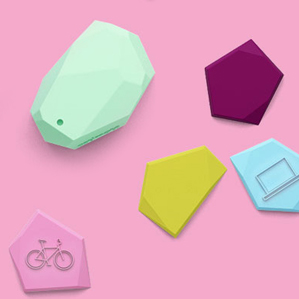How Are Brick-and-Mortar Stores Using Our Mobile Devices?
Shoppers routinely pull out their smartphones in stores to compare prices and look at product reviews. Now stores are trying to take advantage of their customers’ devices, too. They’re using the smartphones to do something akin to what online retailers do—show marketing material to customers based on their whereabouts and their particular interests.

Stores have used low-tech methods like video feeds and greeters to track customers for years. In the past few years, they have mapped foot traffic in their stores with the help of devices that can detect the pings that shoppers’ phones emit when searching for Wi-Fi signals. But now retailers are seeking better and more personalized ways to use customers’ cell phones. Here are some examples.
Bluetooth beacons
These are small computers that stores affix to their walls to help deliver location-specific information to customers, like coupons for products in certain aisles.
Apple popularized the beacons after creating a standard, known as iBeacon, for the data packets they use. That became part of the iOS 7 operating system in 2013. To bring similar technology to Android phones, Samsung is testing its own specification for these types of beacons.
The beacons themselves do not receive any information from customers phones. They only transmit signals (using a form of the Bluetooth short-range wireless standard) that announce their presence to apps customers have chosen to download to their phones. The apps can then serve up coupons, product reviews, or other information pertaining to the part of the store that is nearby.
One startup, New York-based Estimote, makes beacons and stickers that include motion and temperature sensors that can trigger notifications based on more factors than just the phone’s location, like the opening of a door. Inhofer, a German furniture store, is using them to deliver detailed product information to customers walking through the showroom, along with tips for how to select the right bed; it also invites customers to participate in a scavenger hunt around the store. A massive shopping mall, the Toronto Eaton Centre, is installing more than 180 beacons on its four floors to provide location information for its app, which shoppers can use to navigate the mall and receive coupons for the stores they pass.
Multiple stores can participate in a loyalty program run by Shopkick, which makes use of beacons to give shoppers points just for walking in the door. The points can be redeemed for items like movie tickets. Macy’s and Crate & Barrel are among the retailers participating.
Qualcomm spinoff Gimbal, which makes beacons and accompanying software development kits, got hired by Apple to provide beacons in its retail stores. Gimbal also provides location-tracking software for events, combining geofencing—discerning people’s whereabouts from their phones’ GPS coördinates—with beacons that are designed to give specific location data. For example, the Miami Dolphins are using Gimbal’s geofencing technology to remind tailgaters outside the stadium that it’s time to start heading in for the game. Inside the stadium, beacons work with an app to give football fans coupons, as well as a heads-up that they can move to another food line to get served more quickly.
Light signals
Boston-based ByteLight is working with General Electric to augment beacon technology with another, more precise means of delivering information to phones. In this case, LED light fixtures overhead in stores send out both Bluetooth signals and patterns of light that are invisible to human eyes. The Bluetooth signals can send alerts to phones even if the devices are stowed away in a pocket or purse; once the shopper pulls out the phone to use the store’s app, the device’s camera detects the light signals so that the app can deliver highly specific product information—about, say, the item the shopper is standing next to, rather than other items on the same aisle.
The lighting company Philips is also piloting a system that locates shoppers with these invisible light patterns. The manufacturer envisions the system being used in a grocery store, directing shoppers toward the ingredients they need to make a certain dish while feeding them information like recipes and coupons for products on their shopping list.
App mapping
Target is digitizing its stores to help people find products in the aisles, but it is not using beacons to do that. Instead, shoppers can use a Target app to pinpoint locations of brand-name items when they enter a store. Using geofencing technology, the software developer Point Inside has configured Target’s app to know when a shopper is about to arrive. A customer who used the app to make a shopping list will be guided to where those products are.
The takeaway
Bluetooth has been around for years, so beacon technology works pretty well. What is unclear is how widely beacons will be used among retailers. For now, many big retailers are still testing how they affect the bottom line.
Do you have a question? Send suggestions to questionoftheweek@technologyreview.com.
Keep Reading
Most Popular
Large language models can do jaw-dropping things. But nobody knows exactly why.
And that's a problem. Figuring it out is one of the biggest scientific puzzles of our time and a crucial step towards controlling more powerful future models.
How scientists traced a mysterious covid case back to six toilets
When wastewater surveillance turns into a hunt for a single infected individual, the ethics get tricky.
The problem with plug-in hybrids? Their drivers.
Plug-in hybrids are often sold as a transition to EVs, but new data from Europe shows we’re still underestimating the emissions they produce.
Google DeepMind’s new generative model makes Super Mario–like games from scratch
Genie learns how to control games by watching hours and hours of video. It could help train next-gen robots too.
Stay connected
Get the latest updates from
MIT Technology Review
Discover special offers, top stories, upcoming events, and more.